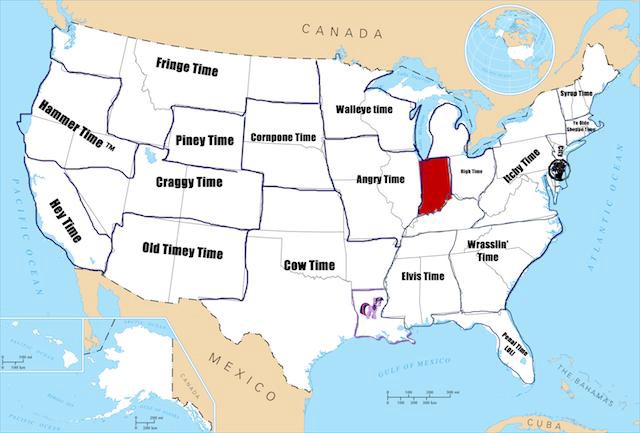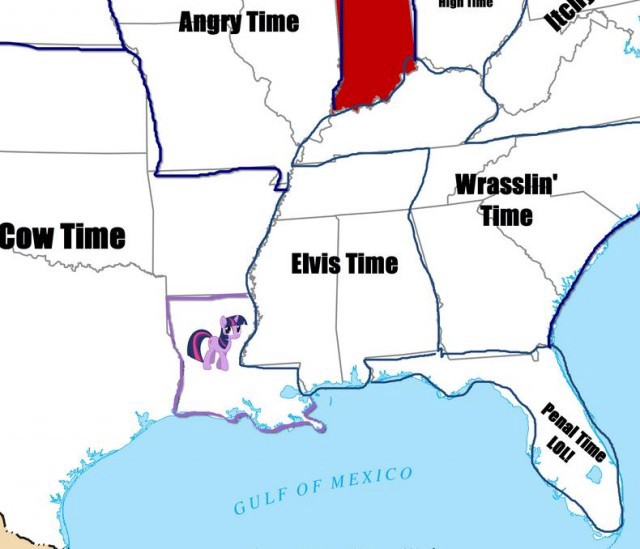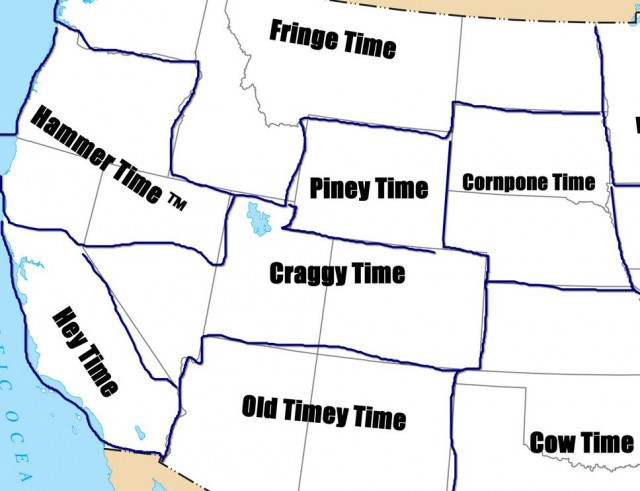How To Vote
Yes it is election day at last, when your voice can be heard! Sort of. Kind of muddily. But this is what we have for now.
This is time for our basically annual reminder that New York has a wacky way of voting! And you can make your voice be heard a little more because candidates appear on different party lines on our weirdo ballots. For instance, Democrats will often appear on the Democrat line but also on the Working Parties line, and if you want to tell them that their voter base is to the left of Democrat, you vote on that line. Crazy right? So if you want to tell de Blasio that you’re on board but you’re left on board, you do that.
Then you will have to confront your feelings on casinos. They’re tacky and horrid! But they create jobs. But ugh, Genting, and Trump! But freedom! But gambling addiction! But capitalism! It’s an impossible choice really. Today is the day when you find out if you are in your heart a libertarian.
Anyway, the actual ballots are just a two-side Scantron page. Fill in the bubbles, scan it into the machine, ta da. You are a solid American citizen for having voted.
We Golf Econo
by Alex Hagen

I.
Golf does not immediately reveal its econo aspect, particularly to the uninitiated. At first glance, it appears anti-econo, a game of privilege and exclusivity, intent on performing and re-performing its superiority and the artifice of its traditions. This, at least, is true at the upper levels of the game’s ruling class, where sponsorship decisions are made and the checks come with seven or eight zeroes. Self-seriousness in golf is not so much an affect as the engine of what goes on. Jim Nantz talking about the azaleas in April, with faux profundity and a gallery full of graying white men with hairless vertically-dominant calves that somehow still taper down to docksiders or white-socked sandals. The Golf Dons treat the official rules as a fetish, and old-style corporate America seems intent on preserving the game as a last bastion of establishment normalcy.

This essay appears in issue #6 of The Classical Magazine, which is called “Econo.” Twenty-six poems, memoirs, histories, fantasies, fictions, non-fictions, prayers, confessions roughly related to sports are inside the latest number of the mag, all to demonstrate that length and depth are different things. Authors include Emma Carmichael, Edith Zimmerman, David Roth, Reeves Wiedeman and Tomas Rios.
As always, you can subscribe to or cop individual issues of the Classical via the awesome 29th Street-powered app for Apple iOS. If you’re not on iOS, you can subscribe — in PDF, Kindle, or ePub formats — through the online store, powered by Space Box.
Golf has “barrier to entry” problems, in figurative and real ways. The game requires large tracts of land that are expensively maintained and often privately held. Its insular world tends to be divided into the entitled Members and the subservient Staff. It takes forever to play, and it thereby self-selects from those who have large swaths of free time on their hands.
Golf is a localized example of the ways in which We Americans splinter up into groups — public/private being a key example — and also how even our recreational activities divide along class and racial lines in deep, consistent ways. We Americans don’t like to talk much about that, in part for lack of a vocabulary. Golf’s ambassadors to the larger non-golf world tend to be too straight-laced and tight-lipped to even skim the surface of any of this. This reticence extends to Tiger, whose impatience with impertinent questions about race and social issues was drilled into his core even before his sexual exploits came to light.
But golf is not monolithic in its meanings. The game played at the local muni is often far removed from the concerns of the USGA or the PGA of America. And, in the past at least, many pros learned to play as caddies and crossed over the social divide, and up the socio-economic ladder, based on the merits of their game. Golf has intrinsic value, and additional value in presenting hypocrisies to be skewered and petards to be hoisted. Without golf, there would be no Caddyshack. Its econo moments stand out more when set against the prevailing, staid warp and woof of the game.
II.
Seve Ballesteros was the most econo golfer of his era, which came after the Watson-Nicklaus duel at Turnberry and ended sometime during the elder Bush’s presidency. Seve’s image sometimes overshadowed his substance, to his irritation. He was almost uniformly referred to as “the swashbuckling Spaniard,” but he had a well-developed game and fiercer intensity. At times, he was elegant and powerful (high draws, towering long irons) but he could also devolve into an erratic, but inventive, recovery artist. He spent entire holes in the woods, only to spare par via some magical approach shot, usually beneath one tree or around another, sometimes having driven onto a green on an adjacent hole or, in one instance at the British — from a parking lot. Bubba Watson’s snap-hooking wedge from the trees in the 2012 Masters resuscitated that Seve magic; that was probably the second most incredible shot at Augusta — after Tiger’s slow-motion chip-in at 16 — that this writer can remember.
Seve’s magisterial feel for the recovery shot sometimes transformed him into a bit of a caricature in the media, who deemed him a beneficiary of luck, rather than a manufacturer of art. Seve won the Masters in 1980 and 1983, finished third in 1982, and second in 1985. In 1986 he chunked a four-iron at 15, SPLASH! (with some murmurings by the crowd that sounded suspiciously like muted cheering), and the Golden Bear went on to win. In 1987, Seve missed a putt on the first sudden-death playoff hole with Mize and Norman, which Mize went on to win by chipping in on 11 and then doing a White-Guy-Golfer celebration. Seve’s failures were less epic than Norman in 1996 and less befuddling than De Vicenzo in 1968. My favorite Seve story is of the potentially apocryphal variety:
Hey Seve, can you tell us about the four-putt on 16?
I miss, I miss, I miss, I make.
III.
Notah Begay comes later, in the Tiger era; he even played with Tiger at Stanford. Notah is pear-shaped and smooth-voiced, an American Indian Other tramping around the green fairways. On tour, Notah used a gold-hued putter that was flat on both sides.
For putts of less than fifteen feet, he would putt right-handed or left-handed depending on the break. This is now known as switch-putting.
Switch-putting is anomalous and beautiful. Being ambidextrous is a form of shape-shifting, adapting the means employed to the situation at hand. Notah is now a commentator, trafficking in the golf-whisper with as much diplomatic aplomb as David Feherty. Neither were particularly strong players; both are superb commentators. This reflects the Wallacian insight about how athletic execution and self-consciousness are at war with another. Notah’s past struggles include a pair of DUIs, which he appears thankfully to have put behind him, whereas Feherty’s struggles are looming and omnipresent and grist for his mytho-poetic mill.
IV.
The most econo golfer in the world today is not a golfer, or at least no longer a professional golfer. David Feherty is more of an apostate than an ambassador; most in the golfing world love him all the more for it. He pops pills, battles demons, and provides coherence, comic relief, and luminous insight to the narrative of a final round. Golf depends on television to deliver its product — going to a tournament and watching it live denies you the simultaneity of competition, whereas the couch-sitting TV watcher has a certain omniscience in knowing how the field sits before most of the individual players do. Feherty is lively, talkative, and uncensored — an orientation at odds with the run-of-the-mill Tour player.
Faherty serves as the MC of a telecast and, of late, an eponymous television show. He rejects cant and seems intent on enlivening the tournament telecasts with equal parts humor and humanity. He sometimes pushes too far to get a laugh, but like Blake said, you’ll never know what is enough until you know what is too much. His honesty is piercing and a welcome relief from the mumbling inanities that most of the players seem content to offer.
Feherty once confessed to shitting his pants late in a round in a tournament on what he deemed the Safari Tour. He had his caddy pull out his rain pants, and he finished the round. Sometimes what’s on the scorecard matters less than that you finished the round, with fuck-all concern for looking respectable or appropriate in the process. Presumably finishing the round was for Feherty the moral victory on the pants-shitting day. Our victory comes from the fact that he is unafraid to tell the tale and unafraid at the prospect that we might think less of him for having heard it told. In golf, it is said that there are no pictures on the scorecard — that the number, not the way in which it was achieved (the style), is what matters. And that is a charismatic anti-style unto itself. Call it econo.
Alex Hagen lives in Sioux Falls, South Dakota, with his wife Blayne. He plays golf sporadically.
New York City, November 3, 2013

★★ A fleeting moment of blue vanished into a gray morning. The scooters had to scoot out into it regardless; the unsaved daylight hours were dwindling away. A cold, sparse drizzle was blowing on a cold wind, but the fallen leaves were still dry and curly enough for one to scrape along under a scooter for a while. Even in the gloom, the maple at the far eastern end of the schoolyard was a saturated gold. The children scootered around and through games of foursquare, basketball, soccer. Adults were playing racquetball on the concrete wall. It got darker. The two-year-old took to the climber, his nose and his feet both running freely, and refused to leave till he was hauled away. Then, during naptime, the actual daylight broke through, dazzling quantities of it. Yellow taxis crossed on the elevated expressway above yellow trees and a band of yellow leaves inside the fence where the developers keep green space off limits to park-goers. Upthrust bundles of bare rebar threw long shadows across the current top level of the rising building next door. The two-year-old, awake, wanted to head out again. The late amber glow clung to figures in hooded orange blankets, shuffling bare-legged away from the Park. The clouds had blown out so completely that there was nothing to see of sunset, just a bland fading wash of color over the river.
Penis Dubious
Does this video show a giant Glaswegian fireworks penis, or are commenters right to be skeptical?
You Are Not Gonna Believe How People Who Love Guns Feel About Black People
“If there’s a gun in your house, you’re more likely to be racist, a new study suggests.”
Horses Unfrightened
Don’t get me wrong, the bear does not give a good account of himself here, but the fact that we now measure the majesty of nature by the possibility that it might be “classic on YouTube” somehow speaks to what we’ve lost of wonder in this new age of technology. But yes, bad show, bear.
Bill de Blasio, Liberalism's Last Chance
“Some people remain skeptical, especially the establishment types who would gladly have handed Bloomberg yet another four years. But, given the skillful campaign that de Blasio has run and the huge mandate that a record-breaking victory would confer, he could well prove to be a more formidable mayor than they suggest. In any case, a de Blasio mayoralty will be widely viewed as a test case for liberal reformers everywhere.”
Don't Mess With Harper Lee
“Harper Lee, the 87-year-old author of ‘To Kill a Mockingbird,’ has written a new tale of injustice in the South. And this time, she is the victim. Her current target isn’t the racial prejudice of the Jim Crow era that she portrayed in her celebrated 1960 novel. It is the town museum, which Ms. Lee has sued for allegedly piggybacking on her trademarks in order to reel in visitors and revenue for its gift shop.”
— You had better believe that we stand with Awl contributor Harper Lee on this one.
The U.S. Needs To Retire Daylight Savings Time And Just Have 19 Time Zones -- Nine Minutes Apart
by Kevin Depew

This past weekend, due to the end of Daylight Savings Time, many of us set our clocks ahead one hour, which proved to be foolish because apparently we were supposed to set them back one hour, but that is beside the point. What is important is that we, as a civilized society, embraced this change. We seized the opportunity to screw around with time. This is a good thing.
Some have recently argued against Daylight Savings Time, even going so far as to propose reducing the number of time zones in America to two from four1. I have a better plan. Instead of reducing the number of time zones, let’s increase them. To nineteen. Nineteen time zones, separated by nine minutes.

Horizontal Time: A Tribute To America’s Past And Future
Before you immediately agree to this obvious plan and begin changing your clocks, let me explain how it would work. Our map illustrates the new nineteen U.S. time zones. They are separated by nine minutes each, more or less. Under my plan, after you get past Chicago (Angry Time), the time zones start to become more intuitive because they subdivide horizontally rather than vertically. Driving from Montana to Arizona is like metaphorically going back in time, only literally. Because you will actually be going back in time. By nine minutes for every time zone. Also, as you can see, the new time zones will have really cool names.
Naturally, the first question is: Why does this map look so shitty? Please, just try to focus on the time zones.2 Beginning with the top right northern-most section of the map, note that Maine, Vermont and New Hampshire are now on Syrup Time, which should be completely obvious.
Massachusetts, Rhode Island and Connecticut will fall under Ye Olde Shoppe Time, a tribute to that region’s rich history of having lots of stores called Ye Olde Shoppes everywhere. Sometimes the S’s are even spelled like F’s.
Note that Indiana does not have a time zone. No one really knows why. Hey, it’s a free country and if you don’t want to have a time zone that’s your decision.
The New York City tri-state area pretty much has its own time zone because the people there are very, very selfish. City Time will lose a minute every day because the pace is just… whatever. People hurry around all the time, push each other to get on the subway and yell stuff at each other and there is another train right behind this one. One minute away. Look, you can actually see it! The next train is right there. It’s right there! And it’s not even crowded. Why do you have to push yourself onto this one? Wait one minute. Wait just one fucking minute! But no one ever does. So New Yorkers lose one minute a day. That means a week from today 7:53 will actually be 7:46. That’s a half an hour a month just gone. An entire day-and-a-half every year just vanishes. Good job. I hope you’re happy.
Some might point out: I’m confused. This map seems completely random, almost as if the time zones were drawn by a five year old. This confusion is understandable because the time zones were, in fact, drawn by my five-year-old daughter, so I think we can all agree that these are actually pretty good time zones for someone who is five and that the Twilight Sparkle time zone (Louisiana, of course!) is the prettiest.
How Easy Will This Be For Everyone? So Easy

Another obvious question is: Wouldn’t this plan create a weird class of “Timey People” who can somehow quickly and amazingly calculate the time between all the seemingly-randomly-drawn time zones? Come on. The answer is of course it would. If it’s 1:54 in City Time, then clearly it’s 1:33 in Angry Time, 1:02 in Piney Time and only 12:48 in Hey Time, right? I know this because I am one of the Timey People. Poor, non-Timey People. What good are your fancy wristwatches now?
Obviously, under this new time zone system, a key concern is, What time does the Super Bowl start?3 The answer is 9 p.m. Under the new system, everything starts at 9. By the way, good luck getting a dinner reservation at 9 because that’s when everything starts. Your OpenTable reservation will have to be for either 5:30 or 10:30 like everyone else. We will still meet for dinner at 9, of course, because everything starts at 9, but it will really be either 5:30 or 10:30. Only the stars eat at “real 9.”
A Key To Your Exciting New Time Zones

• Syrup Time — Vermont, Maine, New Hampshire. Boringly obvious.
• Ye Olde Shoppe Time — Connecticut, Maffachufettf, Rhode Ifland.
• City Time — Tri-state area. A bunch of selfish jerks.
• Itchy Time — The rest of New York, Pennsylvania, Delaware, Maryland, both Virginias. Christ, I get itchy just thinking about those states.
• High Time — Ohio and Michigan. I am not a cop.
• Elvis Time — The cool parts of Tennessee, like Nashville and Memphis, and pretty much all of Mississippi and Alabama.
• Wrasslin’ Time — Kentucky, the sad half of Tennessee, Georgia and the Carolinas.
• Penal Time — Florida.
“Why penal time, man?”
“No reason.”
“Is it because of my brother? Cause he’s on parole now.”
“No, it’s just, look: it’s the state. Like, the shape of it. It’s sort of a pun.”
“I hate puns.”
• Twilight Sparkle Time — Louisiana by Lulu.
• Angry Time — Illinois, Missouri, Iowa, pretty much what you’d expect.
• Piney Time — Heavily pine-infested areas in what I believe may be Colorado.
• Cornpone Time — Nebraska mostly. Also South Dakota, I guess?
• Walleye Time — Minnesota, Wisconsin. Just think about it.
• Fringe Time — All the states at the top past Minnesota. Basically what we privately refer to as the Canada states.
• Cow Time — On the map you’ll see this large region and be like, “Yep, that’s pretty much Cow Time alright.”
• Old Timey Time — Arizona, parts of the Old West where it’s like deserty and most of the towns are old timey towns.
• Hammer Time™ — Everyone should say Hammer Time like the guy in that song, “It’s 9 p.m. hammahtiiime.” That way you are giving out important time information in a whimsical way.
• Craggy Time — I don’t even know what the names of these states are, except Las Vegas.
• Hey Time — Quick, based on this conversation, guess where I am?
“Hey.”
“Hey.”
“…”
“…”
“You hit any traffic?”
“Just the usual.”
“Cool.”

1. Wow, so there are actually nine time zones in the U.S. I looked it up and was very surprised. I mean, I would have guessed six. For the purposes of this article, however, I went with four because two of what I assumed were the six U.S. time zones are in Hawaii and Alaska and those are not really states, but vacations. I have never actually even met anyone who is from Alaska. I know they had that crazy gun nut governor who ran for president or whatever a few years back but was she really even from Alaska? Like from from Alaska? I doubt it. I would guess Minnesota or maybe Wisconsin. Walleye Time, right?
2. Due to the proliferation of increasingly affordable and sometimes even free design software after about 2002 or so, the standards for internet design began to rapidly increase, rendering much of what is now created on the fly (which, let’s be fair, when I say “on the fly” I am talking about what was for me several hours of painstaking work) by those of us who don’t know anything about design just absolutely horrible. I actually thought about using one of those outsourcing services where you pay a child in India like 47 cents to make something that looks really good, but in the end I just didn’t have the stomach for it and figured why not give my own five- year-old a chance?
3. The “What time does the Super Bowl start” thing is just a stupid search engine optimization (SEO) reference. SEO is how people used to drive traffic to their web sites. The Huffington Post, among others, at one point really were able to use SEO to seemingly get out ahead of the curve and drive massive traffic to their internet articles, most of which were more like placeholders, i.e. nothing more than an obvious headline someone might type into a search engine, the most famous example was probably the “What time does the super bowl start?” article which was nothing more than the question for the headline and “6:45 p.m.” in the body of the article along with a bunch of related keywords like Super Bowl, Nachos, beer, etc. etc. Also, are you seriously reading these footnotes? Because I thought no one ever does that anymore, especially on the Internet, but if you are, email me?
Kevin Depew is a writer and editor living in New York City. He is available in all the usual locations.
This Is 4-D Printing
The one nice thing about getting older is when you start to see things that will eventually be commonplace but make no sense to you now you can at least be relieved about the fact that you will probably dead by the time you would need to understand them. Good luck with whatever the hell this is, kids.
